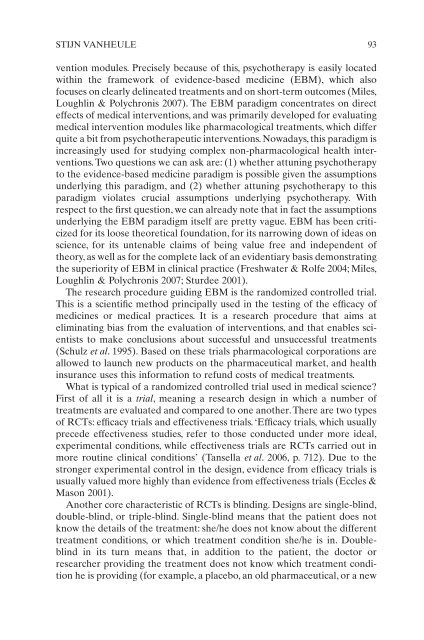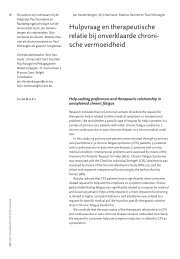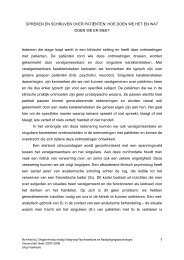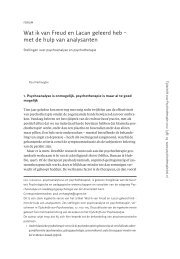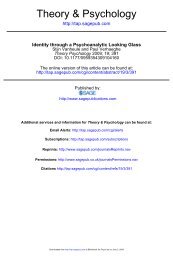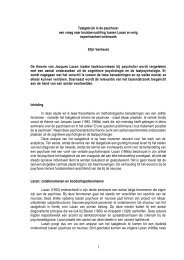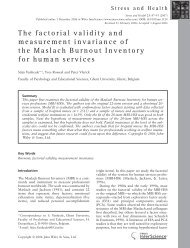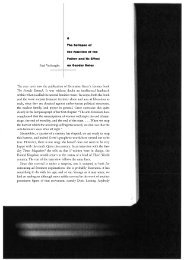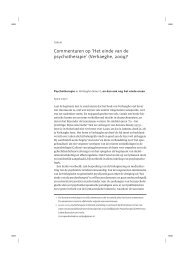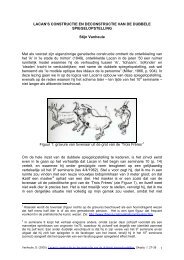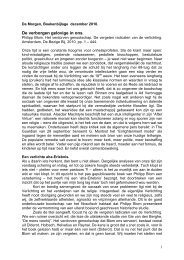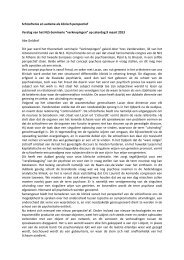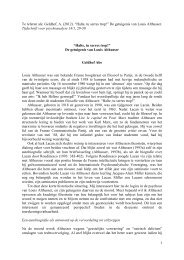psychotherapy and research
psychotherapy and research
psychotherapy and research
You also want an ePaper? Increase the reach of your titles
YUMPU automatically turns print PDFs into web optimized ePapers that Google loves.
STIJN VANHEULE 93vention modules. Precisely because of this, <strong>psychotherapy</strong> is easily locatedwithin the framework of evidence-based medicine (EBM), which alsofocuses on clearly delineated treatments <strong>and</strong> on short-term outcomes (Miles,Loughlin & Polychronis 2007). The EBM paradigm concentrates on directeffects of medical interventions, <strong>and</strong> was primarily developed for evaluatingmedical intervention modules like pharmacological treatments, which differquite a bit from psychotherapeutic interventions. Nowadays, this paradigm isincreasingly used for studying complex non-pharmacological health interventions.Two questions we can ask are: (1) whether attuning <strong>psychotherapy</strong>to the evidence-based medicine paradigm is possible given the assumptionsunderlying this paradigm, <strong>and</strong> (2) whether attuning <strong>psychotherapy</strong> to thisparadigm violates crucial assumptions underlying <strong>psychotherapy</strong>. Withrespect to the first question, we can already note that in fact the assumptionsunderlying the EBM paradigm itself are pretty vague. EBM has been criticizedfor its loose theoretical foundation, for its narrowing down of ideas onscience, for its untenable claims of being value free <strong>and</strong> independent oftheory, as well as for the complete lack of an evidentiary basis demonstratingthe superiority of EBM in clinical practice (Freshwater & Rolfe 2004; Miles,Loughlin & Polychronis 2007; Sturdee 2001).The <strong>research</strong> procedure guiding EBM is the r<strong>and</strong>omized controlled trial.This is a scientific method principally used in the testing of the efficacy ofmedicines or medical practices. It is a <strong>research</strong> procedure that aims ateliminating bias from the evaluation of interventions, <strong>and</strong> that enables scientiststo make conclusions about successful <strong>and</strong> unsuccessful treatments(Schulz et al. 1995). Based on these trials pharmacological corporations areallowed to launch new products on the pharmaceutical market, <strong>and</strong> healthinsurance uses this information to refund costs of medical treatments.What is typical of a r<strong>and</strong>omized controlled trial used in medical science?First of all it is a trial, meaning a <strong>research</strong> design in which a number oftreatments are evaluated <strong>and</strong> compared to one another. There are two typesof RCTs: efficacy trials <strong>and</strong> effectiveness trials. ‘Efficacy trials, which usuallyprecede effectiveness studies, refer to those conducted under more ideal,experimental conditions, while effectiveness trials are RCTs carried out inmore routine clinical conditions’ (Tansella et al. 2006, p. 712). Due to thestronger experimental control in the design, evidence from efficacy trials isusually valued more highly than evidence from effectiveness trials (Eccles &Mason 2001).Another core characteristic of RCTs is blinding. Designs are single-blind,double-blind, or triple-blind. Single-blind means that the patient does notknow the details of the treatment: she/he does not know about the differenttreatment conditions, or which treatment condition she/he is in. Doubleblindin its turn means that, in addition to the patient, the doctor or<strong>research</strong>er providing the treatment does not know which treatment conditionhe is providing (for example, a placebo, an old pharmaceutical, or a new


